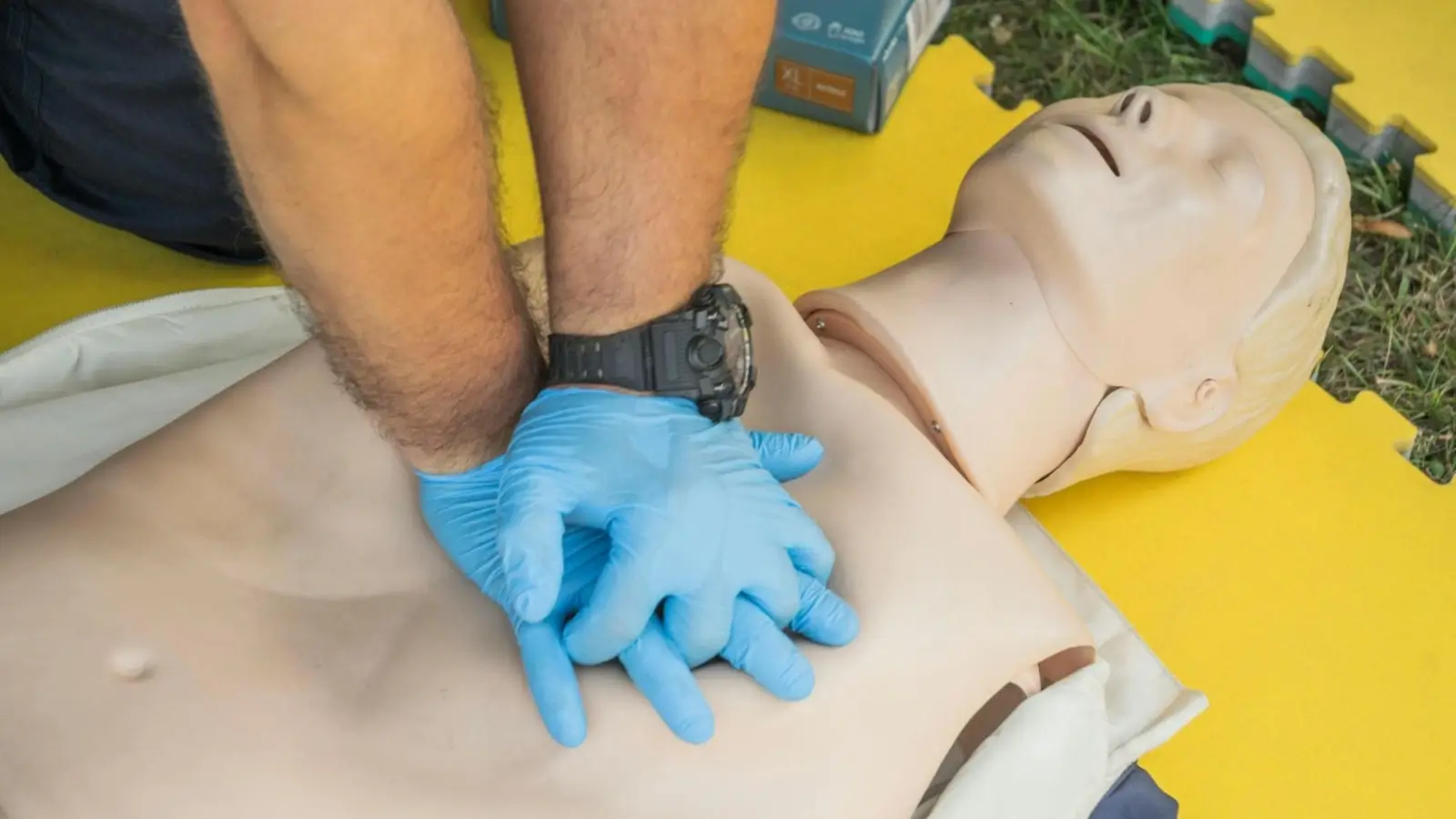


The chance of a cardiac arrest happening in your workplace may be slim, but it's not impossible. Brain injury can set in within minutes of a cardiac arrest occurring. Having someone CPR-trained at your workplace could potentially help save this person’s life.
This post delves more into the importance of CPR training and how to prepare for this emergency in case it one day happens.
CPR stands for ‘cardiopulmonary resuscitation’. It’s a lifesaving first aid technique that you’ve probably seen in many TV shows and movies - it requires giving chest compressions to keep blood and oxygen flowing to the brain and all the vital organs when the heart stops. Rescue breaths may also be provided in some cases.
Contrary to popular belief, it is rare that you will ever resuscitate someone through CPR alone. However, continuous CPR can keep someone alive until emergency services arrive, at which point an automatic external defibrillator (AED) can be used to restart their heart. Without carrying out CPR, it is highly unlikely the patient will be able to be resuscitated (and if they are resuscitated, there’s a high risk they’ll have major brain and organ damage).
There are many reasons why it’s important to have somebody CPR-trained in your workplace:
The faster CPR is provided, the greater chance there is of someone’s life being saved. If someone is CPR-certified, they will be able to react fast without having to consult a Youtube video for help. This increases the chance of emergency services being able to resuscitate them when they arrive, and also reduces the risk of brain damage and organ injury.
All employers must provide adequate health and safety measures within their workplace to protect their employees. Although there is no federal law requiring CPR training, certain industries and states have made it a law, and it is often seen as an expectation within many companies alongside other first aid training.
Having someone on your team who is CPR trained could help to put people at ease. Employees who receive CPR training may also feel more confident dealing with the risk of an emergency, plus they’ll be happy to have expanded their skillset.
If someone dies in your work premises - be it an employee or a client - and you were unable to take action to help save their life, you could receive a hefty lawsuit. This is not what any company wants to be dealing with in the wake of a tragedy.
There are a number of CPR training programs that you can look into across the US. Some of these are workshops, while others are courses that can provide certification.
You will first need to decide who will obtain this training - many employers feel that it is their duty to be certified, but you may also want to train up a senior employee or another member of your staff. Ideally, there should be someone who is first aid trained on every shift - so if you’re not always in the office when other employees are working there, you will need to consider training other staff members.
You will then need to decide what type of program to opt for:
It is recommended that you choose an accredited provider. There are many accredited national and local organizations that you can choose from. Read reviews to see what people recommend.
Consider the depth of the training. Will a standard CPR course be enough? Or should you consider a CPR course with AED training too? There are also more advanced Basic Life Support (BLS) courses that you can take, as well as more general first aid courses that cover everything from the recovery position to treating bleeding.
Will you travel offsite to take part in a course? Or will you invite someone to your workplace to carry out the training? Both options can have their advantages. Some courses may also come with online training and assessments.
Continuous training could be important for refreshing your knowledge. This could include taking refresher courses or carrying out drills. You can even lease A RQI station to practice your CPR skills.
CPR can be carried out without equipment if you’re in an emergency, however it can be useful to have certain items handy in your workplace to practice and increase your chances of saving someone’s life. Equipment you may want to consider includes:
First aid kit: Having a fully stocked first aid kit could be important in case someone has also sustained an injury or you need to cut through clothes. This should contain items like bandages, band-aids, disposable gloves, scissors and safety pins.
Automated external defibrillator (AED): An AED sends an electric shock that can restart the heart, potentially allowing a patient to be resuscitated before emergency services arrive. This equipment requires training to use and must be well maintained.
CPR face shield: A CPR face shield is a piece of equipment that can help when providing rescue breaths. It can help to protect against infection and improve the quality of breaths in some cases.
Health and safety signage/handbooks: It may be possible to advise and remind employees on how to carry out first aid using signage or a conveniently accessible handbook.
CPR manikin: CPR manikins can be used to practise CPR. They will usually be provided by first aid trainers, but you can buy or hire them yourself for practice.
CPR training is worthwhile looking into for peace of mind. Hopefully, you’ll never have to use it, but in the unfortunate event of a cardiac arrest on your premises, you’ll be glad you invested in training.
Take your time to select the right course and consider acquiring extra equipment to help you provide CPR. Think carefully about who you train and make sure you occasionally refresh your skills.